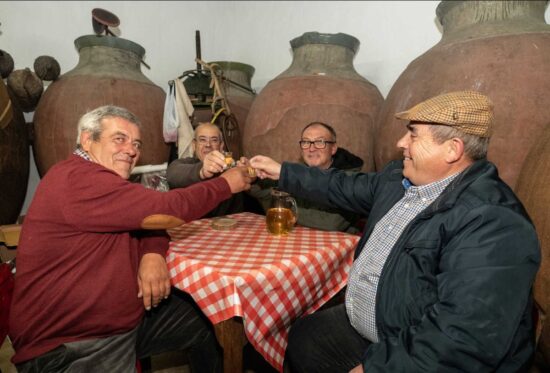
You know by now that the Wine Corner cherishes a special fondness for winemakers with a historical consciousness; the kind of people who have a healthy respect for the old ways, even while making what is now considered cutting-edge, contemporary wine.
So how delighted were we when earlier this week we had our first experience with Talha wine from Portugal. It’s an approach and a technique almost wholly associated with home winemaking in rural villages and townships there among families with space to cultivate a few vines. Until quite recently, Talha operated totally under the radar.
Briefly, fruit is harvested and foot-trodden before being put into the moderately-sized terra cotta pot known as a Talha. Stems go in first to provide a kind of filter for when the wine is later drawn off, then the crushed fruit and juice. The pot is left open until fermentation is complete, at which time a bit of olive oil is added to float on the surface and seal the wine off. It rests undisturbed until the feast of St. Martin on November 11 — just weeks from harvest — when it’s considered ready to drink. The breeching of the Talhas is part of the harvest festival that celebrates the saint’s day. The wine never sees a press.
Talha thus shares something with Beaujolais nouveau (minus the commercial hoopla) and with the ancient domestic winemaking culture of the Republic of Georgia, where rural families employ the rotund clay barrels known as qvevries.These are buried in the ground and not opened until the spring of the following year.
I hope you’ll join me Friday afternoon we’ll be pouring two thoroughly authentic Talha wines from a tiny project in the Alentejo aimed at making these remarkable and historic wines better known. Talha ho, people!
Vila Alva, Alentejo Vino de Talha Vinho Tinto “Maestre Daniel XXVI” $26.95